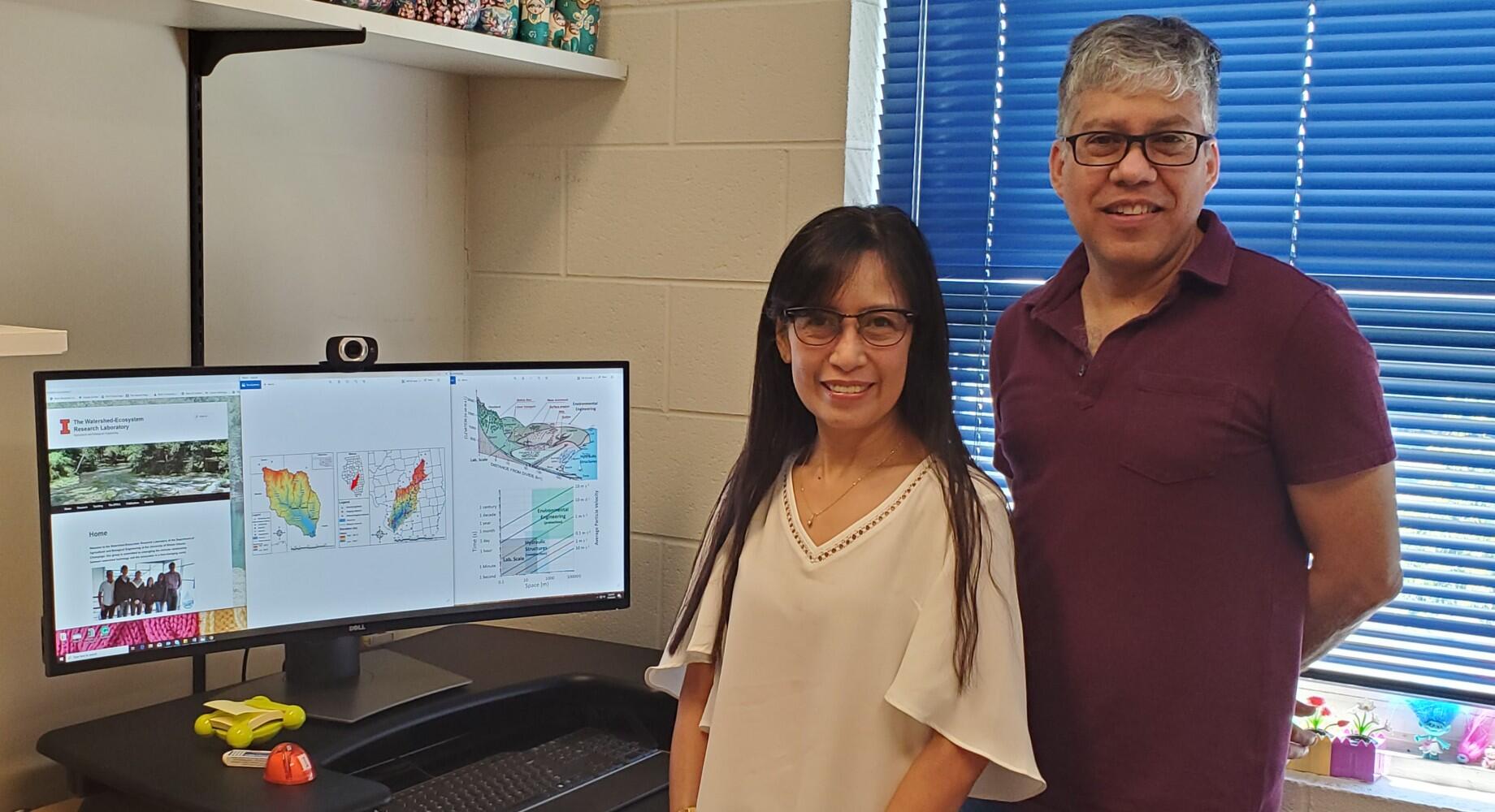Illinois scientists receive USDA NIFA grant to develop soil erosion evaluation tool

URBANA, Ill. – Two University of Illinois scientists received a $500,000 grant from the USDA National Institute of Food and Agriculture (NIFA) to develop a computational tool that stakeholders can use for estimating and predicting soil erosion.
“Quantifying soil erosion is a very complex problem because of the variability in time and space,” says Maria Chu, assistant professor of Agricultural and Biological Engineering (ABE) in the College of Agricultural, Consumer and Environmental Sciences. Chu is principal investigator on the grant.
Wind, water, and human activities drive the erosion process. Land surface erosion diminishes soil fertility and contributes to the pollution of our waterways. As soil particles are mobilized, they act as carriers that can transport biological and chemical pollutants. Erosion processes are difficult to predict. They may happen instantly or over a long period of time, and they may be local but in time can affect watersheds further away. Current measurements are not able to capture the full dynamics of soil erosion in agricultural landscapes, Chu says.
The goal of the project is to develop and integrate a set of computational tools that can enable stakeholders to evaluate the effects of land management practices on erosion over time and space both at the local and regional scale.
“We’re going to create a web interface that farmers can use to assess different scenarios,” says Jorge Guzman, research programmer in ABE, and co-principal investigator on the grant. For example, farmers can choose between different options such as “tilling” or “no tilling” on the website and see the likely effects of each on their regional watershed over time.
“This will provide stakeholders with an information tool that allows them to gain a view of sediment production from the local scale to the regional scale,” Chu says.
To develop the tool, the researchers will use observations from satellite data combined with ground-based data and numerical models. “We are going to extract information from the data to improve hydrologic and erosion models for predictions that can then be converted into decisions,” Guzman says.
The pilot study areas are the Kaskaskia River Watershed in southern Illinois, which feeds into the Mississippi River, as well as a watershed in Oklahoma for comparison purposes. The researchers say their long-term goal is to extend the project to a larger region in the Midwest, and eventually to the entire United States.